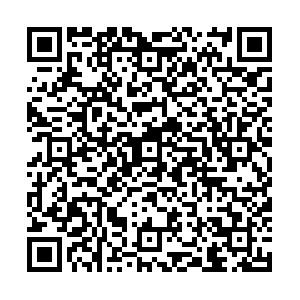-
摘要: 随着世界范围内脑计划研究的大范围开展,人脑连接组学研究得到了快速的发展。宏观尺度上的人脑连接组学主要采用脑成像和电生理技术,建立人脑网络的结构和功能连接模式及拓扑特征,进而揭示健康和疾病状态下人脑网络的组织规律和运行机制。目前人脑连接组学,作为大脑结构-功能精准分析的重要手段,在神经系统正常发育、神经系统疾病等领域中不断应用。本文对人脑连接组学的历史发展、研究进展进行综述,探讨人脑连接组学在脑胶质瘤领域的临床应用与潜在挑战。Abstract: With the large-scale development of the human brain project globally, human brain connectomics has rapidly developed. Macroscopically, human brain connectomics mainly aims to establish structural and functional connection modes and topological characteristics of the human brain network via imaging and electrophysiological technology and reveal organizational and operational mechanisms of the human brain network in the health and disease states. Currently, human brain connectomics, as an important platform to accurately analyze brain structure and function, has been continuously applied in the fields of the normal development of the nervous system and diseases. This study summarizes the historical development and research progress of human brain connectomics and explores the clinical application and potential challenges of human brain connectomics in glioma.
-
Key words:
- human brain connectomics /
- glioma /
- brain network /
- surgery
-
图 1 人脑连接组学图谱(引自人类连接组学计划[5])
-
[1] Bullmore E, Sporns O. Complex brain networks: graph theoretical analysis of structural and functional systems[J]. Nat Rev Neurosci, 2009, 10(3):186-198. doi: 10.1038/nrn2575 [2] Fornito A, Bullmore ET. Connectomics: a new paradigm for understanding brain disease[J]. Eur Neuropsychopharmacol, 2015, 25(5):733-748. doi: 10.1016/j.euroneuro.2014.02.011 [3] 张艳阳,余新光.人脑连接组学在神经外科中的应用进展[J].中国医学影像学杂志,2017,25(10):789-793. doi: 10.3969/j.issn.1005-5185.2017.10.019 [4] Sporns O, Tononi G, Kötter R. The human connectome: a structural description of the human brain[J]. PLoS Comput Biol, 2005, 1(4):e42. doi: 10.1371/journal.pcbi.0010042 [5] Glasser MF, Coalson TS, Robinson EC, et al. A multi-modal parcellation of human cerebral cortex[J]. Nature, 2016, 536(7615):171-178. doi: 10.1038/nature18933 [6] Doyen S, Nicholas P, Poologaindran A, et al. Connectivity-based parcellation of normal and anatomically distorted human cerebral cortex[J]. Hum Brain Mapp, 2022, 43(4):1358-1369. doi: 10.1002/hbm.25728 [7] Rubinov M, Sporns O. Complex network measures of brain connectivity: uses and interpretations[J]. Neuroimage, 2010, 52(3):1059-1069. [8] Schouwenaars IT, de Dreu MJ, Rutten GM, et al. A functional MRI study of presurgical cognitive deficits in glioma patients[J]. Neurooncol Pract, 2021, 8(1):81-90. [9] Maniar YM, Peck KK, Jenabi M, et al. Functional MRI shows altered deactivation and a corresponding decrease in functional connectivity of the default mode network in patients with gliomas[J]. AJNR Am J Neuroradiol, 2021, 42(8):1505-1512. [10] Chen GM, Zhao LP, Jia YB, et al. Abnormal cerebellum-DMN regions connectivity in unmedicated bipolar II disorder[J]. J Affect Disord, 2019, 243:441-447. doi: 10.1016/j.jad.2018.09.076 [11] Tordjman M, Madelin G, Gupta PK, et al. Functional connectivity of the default mode, dorsal attention and Fronto-parietal executive control networks in glial tumor patients[J]. J Neurooncol, 2021, 152(2):347-355. doi: 10.1007/s11060-021-03706-w [12] Sparacia G, Parla G, Lo Re V, et al. Resting-state functional connectome in patients with brain tumors before and after surgical resection[J]. World Neurosurg, 2020, 141:e182-e194. doi: 10.1016/j.wneu.2020.05.054 [13] Stoecklein VM, Stoecklein S, Galiè F, et al. Resting-state fMRI detects alterations in whole brain connectivity related to tumor biology in glioma patients[J]. Neuro Oncol, 2020, 22(9):1388-1398. doi: 10.1093/neuonc/noaa044 [14] Dadario NB, Brahimaj B, Yeung J, et al. Reducing the cognitive footprint of brain tumor surgery[J]. Front Neurol, 2021, 12:711646. [15] Androulakis XM, Krebs KA, Jenkins C, et al. Central executive and default mode network intranet work functional connectivity patterns in chronic migraine[J]. J Neurol Disord, 2018, 6(5):393. [16] Balaev V, Orlov I, Petrushevsky A, et al. Functional connectivity between salience, default mode and frontoparietal networks in post-stroke depression[J]. J Affect Disord, 2018, 227:554-562. doi: 10.1016/j.jad.2017.11.044 [17] Catalino MP, Yao S, Green DL, et al. Mapping cognitive and emotional networks in neurosurgical patients using resting-state functional magnetic resonance imaging[J]. Neurosurg Focus, 2020, 48(2):E9. doi: 10.3171/2019.11.FOCUS19773 [18] Jiang T, Nam DH, Ram Z, et al. Clinical practice guidelines for the management of adult diffuse gliomas[J]. Cancer Lett, 2021, 499:60-72. doi: 10.1016/j.canlet.2020.10.050 [19] Sarubbo S, Duffau H. Connectomic evidences driving a functional approach in neuro-oncological surgery[J]. J Neurosurg Sci, 2021, 65(6):545-547. [20] Duffau H. Brain connectomics applied to oncological neuroscience: from a traditional surgical strategy focusing on glioma topography to a meta-network approach[J]. Acta Neurochir (Wien), 2021, 163(4):905-917. doi: 10.1007/s00701-021-04752-z [21] Duffau H. Mapping the connectome in awake surgery for gliomas: an update[J]. J Neurosurg Sci, 2017, 61(6):612-630. [22] Duffau H. Can non-invasive brain stimulation be considered to facilitate reoperation for low-grade glioma relapse by eliciting neuroplasticity[J]? Front Neurol, 2020, 11:582489. [23] Benzagmout M, Gatignol P, Duffau H. Resection of World Health Organization Grade II gliomas involving Broca's area: methodological and functional considerations[J]. Neurosurgery, 2007, 61(4):741-752. doi: 10.1227/01.NEU.0000298902.69473.77 [24] Sarubbo S, Latini F, Sette E, et al. Is the resection of gliomas in Wernicke's area reliable[J]. Acta Neurochir, 2012, 154(9):1653-1662. doi: 10.1007/s00701-012-1416-z [25] Duffau H. Surgical neurooncology is a brain networks surgery: a “connectomic” perspective[J]. World Neurosurg, 2014, 82(3):e405-e407. [26] Briggs RG, Allan PG, Poologaindran A, et al. The frontal aslant tract and supplementary motor area syndrome: moving towards a connectomic initiation axis[J]. Cancers (Basel), 2021, 13(5):1116. doi: 10.3390/cancers13051116 [27] Imms P, Clemente A, Cook M, et al. The structural connectome in traumatic brain injury: a meta-analysis of graph metrics[J]. Neurosci Biobehav Rev, 2019, 99:128-137. doi: 10.1016/j.neubiorev.2019.01.002 [28] O'Neal CM, Stephens TM, Briggs RG, et al. Navigated transcranial magnetic stimulation following awake craniotomy for resection of glioma: description of two cases[J]. Surg Neurol Int, 2020, 11:433. doi: 10.25259/SNI_628_2020 [29] Raizman R, Tavor I, Biegon A, et al. Traumatic brain injury severity in a network perspective: a diffusion MRI based connectome study[J]. Sci Rep, 2020, 10(1):9121. doi: 10.1038/s41598-020-65948-4 [30] Edlow BL, Barra ME, Zhou DW, et al. Personalized connectome mapping to guide targeted therapy and promote recovery of consciousness in the intensive care unit[J]. Neurocrit Care, 2020, 33(2):364-375. doi: 10.1007/s12028-020-01062-7 -




 下载:
下载:



